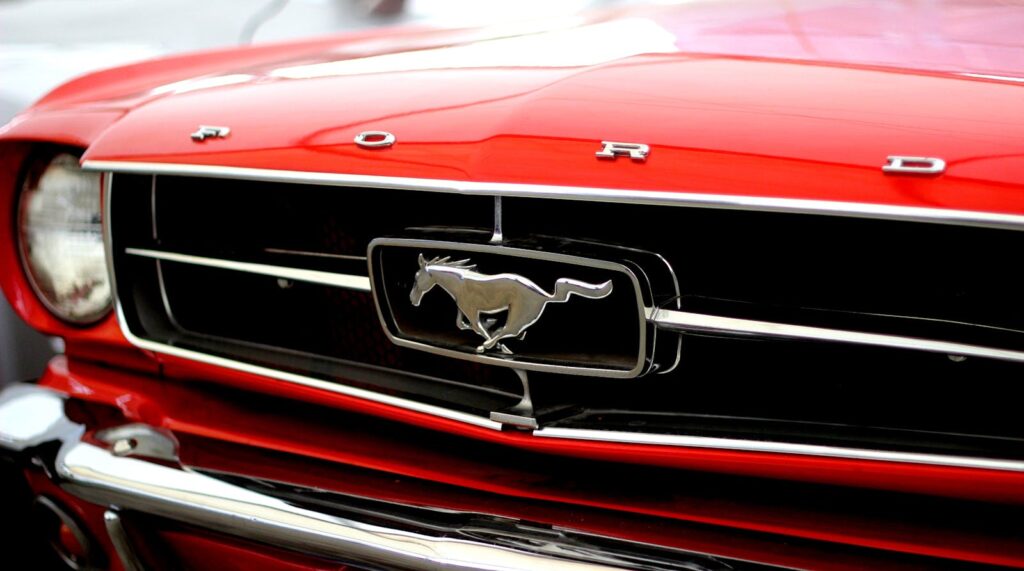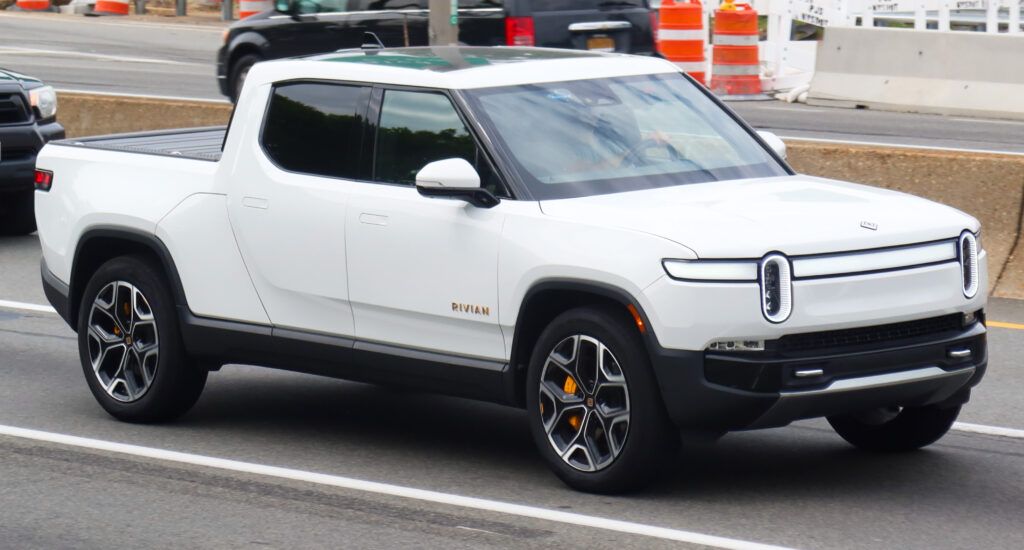
The 1990s, often overlooked in the grand narrative of American muscle, proved to be a truly pivotal era for U.S. automakers. It was a decade where raw, unadulterated horsepower began to blend seamlessly with electronic sophistication, charting a new course for performance vehicles. From groundbreaking turbocharged trucks that defied expectations to refined muscle coupes and stealthy sedans, this period balanced the fervent passion for speed with burgeoning emissions compliance, all while forging modern design cues that would become iconic. These vehicles were not merely cars; they were emblems of their time, bridging the glorious gap between classic muscle heritage and contemporary technology, setting the stage for future automotive marvels.
For far too long, when enthusiasts considered rare American cars, the spotlight almost exclusively shone on the roaring V8s of the 1960s or the charismatic beasts of the early 1970s. However, as discerning collectors and automotive connoisseurs are increasingly realizing, the ’90s quietly spawned a new wave of highly collectible machines, many of which are now commanding prices far beyond initial predictions. These hidden gems, once affordable performance vehicles, have transformed into highly valued collector’s cars, with some examples already seeing auction bids exceeding significant totals. They represent mobile investments where the attraction lies between timeless nostalgia and the sheer thrill of uncouth street machine performance, proving that true automotive greatness is not confined to any single decade.
In this insightful exploration, we delve into the first half of a curated selection of ten such vehicles from the 1990s – each a remarkable testament to American engineering and vision. These are the cars that didn’t just survive the decade; they defined it, bringing a fresh perspective to speed, power, and desirability. From the legendary “King of the Hill” Corvette to unexpected pickups that humbled sports cars, prepare to rediscover the machines that are now worth way more than you might ever have imagined, cementing their place as legitimate, highly coveted pieces of motoring history that will only continue to appreciate in value.

1. **1990–1995 Chevrolet Corvette ZR-1**: Internally known as the “King of the Hill,” the Chevrolet Corvette ZR-1 was a collaborative masterpiece developed with Lotus, fundamentally reshaping preconceived notions of the Corvette’s performance ceiling. This automotive legend introduced the revolutionary LT5 engine, a dual overhead cam (DOHC) V8, which was a significant departure from the traditional pushrod designs and marked a new chapter in Corvette’s pursuit of ultimate power. The engine’s advanced Multi-Port Fuel Injection system and its aluminum block were pivotal in reducing weight while enhancing efficiency, enabling the ZR-1 to deliver truly staggering performance figures that placed it firmly in supercar territory for the early 1990s. With its initial output of 375 hp, later boosted to a formidable 405 hp, the ZR-1 was an undisputed force.
The performance credentials of the ZR-1 were nothing short of spectacular; it could rocket from 0 to 60 mph in approximately 4.5 seconds—a supercar figure in the early 1990s—that stood shoulder-to-shoulder with the most exotic machinery of its time. Production numbers for this engineering marvel were kept deliberately limited, with fewer than 7,000 units built in total across its entire run, thereby ensuring a distinctive limited-production aura that only added to its mystique and long-term collectibility. This exclusivity, coupled with its technological advancements, solidified the ZR-1’s position as a true icon of the decade and a significant chapter in the Corvette lineage, proving that American performance could compete on a global stage with cutting-edge engineering.
The ZR-1’s profound significance lies in its powerful reassertion of the Corvette’s global reputation. It masterfully blended electronic fuel injection mastery with a chassis that was more than capable of holding its own on demanding racetracks, showcasing a holistic approach to performance that was ahead of its time. Today, values for the ZR-1 have seen a considerable rise in auction interest, as collectors increasingly acknowledge its pioneering DOHC V8 and its role as a high point in the American performance revival. It stands not just as a powerful sports car, but as a testament to innovation and a wise investment, making it a highly sought-after piece of automotive history for those who appreciate both its speed and its storied past.
Car Model Information: 2024 RAM 1500 Laramie
Name: Chevrolet Corvette (C4)
Caption: 1994 Chevrolet Corvette
Manufacturer: Chevrolet
Production: January 3, 1983 – June 20, 1996
ModelYears: 1984–1996
Predecessor: Chevrolet Corvette (C3)
Successor: Chevrolet Corvette (C5)
Class: Sports car
Assembly: Bowling Green, Kentucky
BodyStyle: targa top,Convertible (car)
Layout: Front-engine, rear-wheel-drive layout#FMR
Platform: GM Y platform
Wheelbase: cvt
Length: cvt
Width: cvt
Height: Coupe: {{cvt,46.7,in,mm
Transmission: automatic transmission,Overdrive (mechanics),GM 4L60-E transmission,ZF Friedrichshafen
Engine: {{cvt,350,cuin,L,1,Chevrolet small-block engine (first- and second-generation)#L83
Weight: cvt
Designer: Jerry Palmer
Related: Callaway Cars#C4 (RPO B2K Callaway Twin Turbo Corvette),Callaway Cars#C4 (RPO B2K Callaway Twin Turbo Corvette),Callaway Cars#C4 (RPO B2K Callaway Twin Turbo Corvette),Callaway Cars#C6 (Callaway SuperNatural Corvette),Callaway Cars#C4 (RPO B2K Callaway Twin Turbo Corvette)
Categories: 1990s cars, All articles with dead external links, All articles with unsourced statements, Articles with dead external links from November 2016, Articles with permanently dead external links
Summary: The Chevrolet Corvette (C4) is the fourth generation of the Corvette sports car, produced by American automobile manufacturer Chevrolet from 1983 until 1996. The convertible returned, as did higher performance engines, exemplified by the 375 hp (280 kW) LT5 found in the ZR1. In early March 1990, the ZR1 would set new records for the highest average speed over 24 hours at over 175 mph (282 km/h) and highest average speed over 5,000 miles at over 173 mph (278 km/h). With a completely new chassis, modern sleeker styling, and other improvements to the model, prices rose and sales declined. The last C4 was produced on June 20, 1996.
Get more information about: Chevrolet Corvette (C4)
Buying a high-performing used car >>>
Brand: Chevrolet Model: Corvette ZR-1
Price: $37,798 Mileage: 34,409 mi.
Read more about: Back to the Roaring Nineties: 10 Legendary American Muscle Machines That Honored Their Heritage

2. **1991 GMC Syclone**: Before the automotive landscape became saturated with high-performance SUVs, GMC dared to take a radically different approach with the 1991 Syclone. This was no ordinary pickup; it was a compact truck, meticulously fitted with a potent turbocharged V6 engine and an advanced all-wheel-drive system. The outcome was nothing short of astonishing: an unexpected street truck that possessed the uncanny ability to embarrass purpose-built sports cars at the drag strip, shattering perceptions of what a pickup truck could achieve. Its understated appearance belied its brutal capabilities, making it a true sleeper in every sense of the word and a legendary anomaly in the world of American performance vehicles.
Under the hood, the Syclone housed a specially tuned 4.3L V6 engine, which, thanks to its turbocharger, produced an impressive 280 hp and a robust 350 lb-ft of torque. This immense power was channeled through a full-time AWD system, enabling blistering 0–60 mph times that consistently landed in the mid-4-second range—a figure that was truly exceptional for any vehicle, let alone a pickup, in the early 1990s. The minimal turbo lag and robust low-end torque were key to its incredible acceleration, allowing it to launch with ferocity. Production was inherently limited, with approximately 2,995 units ever built, a figure dictated by design and the fact that it was initially overshadowed by more mainstream GMC pickups, making it a rare sight even then.
The Syclone didn’t just push the boundaries of what a truck could be; it elevated the concept of the “muscle truck” to an entirely new echelon. In an era often characterized by more conservative styling, witnessing a seemingly humble GMC pickup decisively devour Porsches and Ferraris on the asphalt was, for many, a surreal and unforgettable experience. Today, the 1991 GMC Syclone stands as a truly revered anomaly in 1990s muscle lore, a testament to bold engineering and unexpected performance. Its scarcity and groundbreaking nature ensure its continued rise in collector value, appealing to those who cherish unique, high-performance machines that defied convention and etched their own legend.
Read more about: The Legendary American Pickup Trucks Every Collector Wants: A Deep Dive into Enduring Icons

3. **1992 GMC Typhoon**: Building upon the groundbreaking success of the Syclone, GMC unleashed its turbocharged magic onto a compact SUV just a year later, giving birth to the 1992 Typhoon. This vehicle shared many of its core mechanical components with its pickup truck predecessor, but it forged an entirely new concept: that of a high-performance SUV, long before such vehicles became a mainstream staple of the automotive market. The Typhoon effectively demonstrated that practicality and blistering speed were not mutually exclusive, creating a category of vehicle that was both family-friendly and adrenaline-pumping, an innovative approach that was years ahead of its time and hinted at future trends in the industry.
At its heart, the Typhoon boasted the same potent turbo 4.3L V6 engine, delivering a strong 280 hp, ensuring that its SUV body shell didn’t compromise on the thrilling performance its Syclone sibling was famous for. This power, coupled with an AWD layout, provided enhanced traction that enabled the Typhoon to achieve impressive 0–60 mph blasts in around 5 seconds. These figures were truly remarkable for a segment of vehicles then known predominantly for family hauling and utility, challenging the status quo with every acceleration. Production of the Typhoon was also limited, with approximately 4,697 units produced from 1992 to 1993, contributing to its scarcity and desirability among collectors today.
What truly set the Typhoon apart, beyond its raw power, was its integrated luxury angle, featuring leather seats and upscale interior trim. This provided a more comfort-oriented experience compared to its more spartan Syclone cousin, effectively combining muscle car power with the utility of an SUV. The Typhoon not only presaged the modern performance SUV market but also stands as a unique piece of automotive history. Its limited-production numbers and its pioneering role in automotive evolution make it a prime target for collectors who are seeking something truly offbeat, a vehicle that offers a blend of performance, practicality, and historical significance that is rarely found in contemporary automobiles.
Car Model Information: 1992 GMC Jimmy Typhoon
Name: GMC Typhoon
Production: 1992–1993,4697 produced
Manufacturer: GMC (marque)
Class: Mid-size car,Sport utility vehicle
BodyStyle: Sport utility vehicle
Related: GMC Syclone,GMC Jimmy
Engine: Chevrolet 90° V6 engine#Turbocharged LB4 4.3L V6
Transmission: Turbo-Hydramatic#THM700R4 / 4L60 / 4L60E / 4L65E / 4L70E,automatic transmission
Wheelbase: 100.5 in (2553 mm)
Length: 170.3 in (4326 mm)
Width: 68.2 in (1732 mm)
Height: 60.0 in (1524 mm)
Weight: 3822 lb (1734 kg)
Layout: Front-engine, four-wheel-drive layout
Categories: Articles with short description, Cars introduced in 1991, Commons category link is on Wikidata, GMC vehicles, Mid-size sport utility vehicles
Summary: The GMC Typhoon is a high-performance SUV, produced from 1992 until 1993 by GMC. The Typhoon was based on the 1991 GMC Syclone.
Get more information about: GMC Typhoon
Buying a high-performing used car >>>
Brand: GMC Model: Typhoon
Price: $35,000 Mileage: 97,978 mi.
Read more about: Back to the Roaring Nineties: 10 Legendary American Muscle Machines That Honored Their Heritage

4. **1992–1993 SVT Mustang Cobra & Cobra R**: The year 1992 marked a significant turning point for Ford’s revered Mustang, as the Special Vehicle Team (SVT) made its debut, ushering in a new era of factory-sanctioned performance for the iconic Fox-body platform. This initiative brought forth the Mustang Cobra, a vehicle that meticulously refined the beloved 5.0L formula, elevating its capabilities and appeal. But for the truly hardcore enthusiasts, Ford offered an even more potent and exclusive variant: the rarer Cobra R, a machine stripped down to its essentials, shedding crucial weight with a singular focus on achieving track dominance. These models weren’t just Mustangs; they were statements, showcasing Ford’s renewed commitment to high-performance and a direct challenge to its competitors.
The heart of the Cobra was a High-Output 5.0L small block engine, producing approximately 235 hp, complemented by slightly modified heads and an enhanced intake system. This configuration delivered a thrilling driving experience, encapsulating the spirit of the Mustang with modern refinements. The Cobra R, however, took this philosophy to its extreme, eliminating rear seats, the radio, and air conditioning—all in the name of pure, unadulterated speed and handling. Production numbers underscored their exclusivity: 4,993 Cobra hatchbacks were built for 1993, while the Cobra R was an ultra-rare beast, with just 107 models ever seeing the light of day. Their performance was more than respectable for a mid-sized 1990s coupe, achieving quarter-mile times in the low 14s, proving their mettle both on the street and on the strip.
Enthusiasts today revere these early SVT Cobras for their crucial role in bridging the gap between old-school pushrod power and updated Electronic Fuel Injection (EFI) technology, augmented by significant chassis upgrades. The Cobra R, in particular, is considered a veritable unicorn in the automotive world: a remarkably limited-production pony car meticulously built solely for the most hardcore drivers and track-day aficionados. This uncompromising approach not only created an instant legend but also sparked a lasting legacy, serving as a powerful blueprint and inspiration for future track-oriented Mustangs from Ford, firmly establishing SVT as a formidable force in performance vehicle development. Its current collector value reflects its deep historical significance and enduring appeal among those who appreciate purpose-built machines.
Car Model Information: 2024 RAM 1500 Laramie
Caption: 2004 Ford Mustang SVT Cobra
Name: Ford SVT Mustang Cobra
Manufacturer: Special Vehicle Team
Production: 1993–2004 (79,958 produced)
Class: Pony car
BodyStyle: 1993:,hatchback,coupe,convertible
Successor: Shelby Mustang#2007.E2.80.932009 Ford Shelby GT500
Platform: Ford Fox platform
Layout: Front-engine, rear-wheel drive layout
Categories: 2000s cars, All articles with specifically marked weasel-worded phrases, Articles with short description, Articles with specifically marked weasel-worded phrases from July 2025, Cars introduced in 1993
Summary: The Ford SVT Mustang Cobra (also known as “SVT Mustang Cobra, SVT Cobra,” or simply as “Cobra”) is a pony car that was built by American automobile manufacturer Ford Motor Company’s Special Vehicle Team division (or SVT) for the 1993 to 2004 model years.
The SVT Cobra was a high-performance version of the Ford Mustang and was considered the top-of-the-line variant, being positioned above the Mustang GT and Mach 1 models during its production run. On three occasions, the race-ready, street-legal SVT Cobra R variant was produced in limited numbers.
The SVT Cobra was succeeded by the Mustang Shelby GT500 which was introduced for the 2007 model year.
Get more information about: Ford Mustang SVT Cobra
Buying a high-performing used car >>>
Brand: Ford Model: Mustang Cobra
Price: $37,798 Mileage: 34,409 mi.
Read more about: Back to the Roaring Nineties: 10 Legendary American Muscle Machines That Honored Their Heritage
5. **1992–1995 Ford Taurus SHO (Manual Versions)**: When the Ford Taurus first burst onto the scene in the mid-1980s, it wasn’t just another car; it revolutionized the family sedan market with its aerodynamic styling and innovative design. However, Ford then took an unexpected turn, introducing the Super High Output (SHO) variant—a true sleeper performance package that defied conventional expectations for a family car. Co-developed with Yamaha, the SHO featured a remarkably sophisticated 3.0L DOHC V6 engine, and in its most revered form, it was paired with a manual transmission, transforming a seemingly ordinary sedan into an exhilarating driving machine that offered far more than met the eye.
The heart of the early SHO was its extraordinary 3.0L DOHC V6 engine, later expanded to 3.2L for automatic versions, which was capable of revving cleanly to an impressive 7,000 rpm, producing around 220 hp. This was an astonishing output for a V6 in that era, especially when nestled within a family sedan. The availability of a 5-speed manual transmission in these early SHOs was a crucial element, offering a surprisingly sporty and engaging feel that was utterly unexpected in a mainstream sedan, providing a direct connection between driver and machine. While manual-transmission SHOs were never massive sellers, often overshadowed by the more common automatic family configurations, their rarity now contributes significantly to their appeal.
The performance of the manual SHO was genuinely impressive, achieving 0–60 mph times in the mid-6-second range, a figure that allowed it to handily outrun many traditional V8 coupes of the day. The Taurus SHO, therefore, proved definitively that a family sedan could be both incredibly sporty and supremely practical, an unprecedented combination that laid essential groundwork for the future of performance sedans in the American market. While it may not be widely recognized in the traditional sense as a “muscle” car, the manual SHO is a true gem for enthusiasts who deeply value stealth performance, refined engineering, and the thrill of an unexpected powerhouse that offered sophistication alongside its raw speed. Its unique place in automotive history guarantees its increasing appreciation among collectors.
As we journey deeper into the dynamic automotive landscape of the 1990s, it becomes clear this decade was more than just a bridge between classic and modern—it was a crucible for innovation, birthing vehicles that defied convention. Having explored some trailblazers, our expedition now takes us to another cohort of legends. These machines, while perhaps less heralded initially, have meticulously carved out a niche in collector garages, demonstrating exceptional performance, audacious design, or pioneering engineering. Prepare to uncover five more powerhouses that solidified the ’90s as a truly remarkable and surprisingly lucrative era for American automotive history.
Car Model Information: 2024 RAM 1500 Laramie
Name: Ford Taurus SHO
Manufacturer: Ford Motor Company
ModelYears: 1989–1999,2010–2019
Related: Ford Taurus
Class: Mid-size
Layout: Front-engine, front-wheel-drive layout
Designer: Jack Telnack
Categories: 1980s cars, 1990s cars, 2000s cars, 2010s cars, All articles with unsourced statements
Summary: The Ford Taurus SHO (Super High Output) is the high-performance variant of the Ford Taurus. Originally intended as a limited-production model, the SHO was produced for the first three generations of the model line, from the 1989 to the 1999 model years. After an 11-year hiatus, the name was revived for 2010, and continued in use until the 2019 discontinuation of the Taurus model line.
In contrast with standard versions of the Taurus, the Taurus SHO did not have a Mercury Sable counterpart; however, the 2010–2019 SHO served as the basis for the Ford Police Interceptor Sedan (replacing the long-running Ford Crown Victoria Police Interceptor). The final version is the only Taurus ever offered with the twin-turbocharged EcoBoost V6 engine.
The first three generations of the SHO were assembled at Atlanta Assembly (Hapeville, Georgia); the fourth generation was assembled at Chicago Assembly (Chicago, Illinois).
Get more information about: Ford Taurus SHO
Buying a high-performing used car >>>
Brand: Ford Model: Taurus SHO
Price: $37,798 Mileage: 34,409 mi.
Read more about: Back to the Roaring Nineties: 10 Legendary American Muscle Machines That Honored Their Heritage
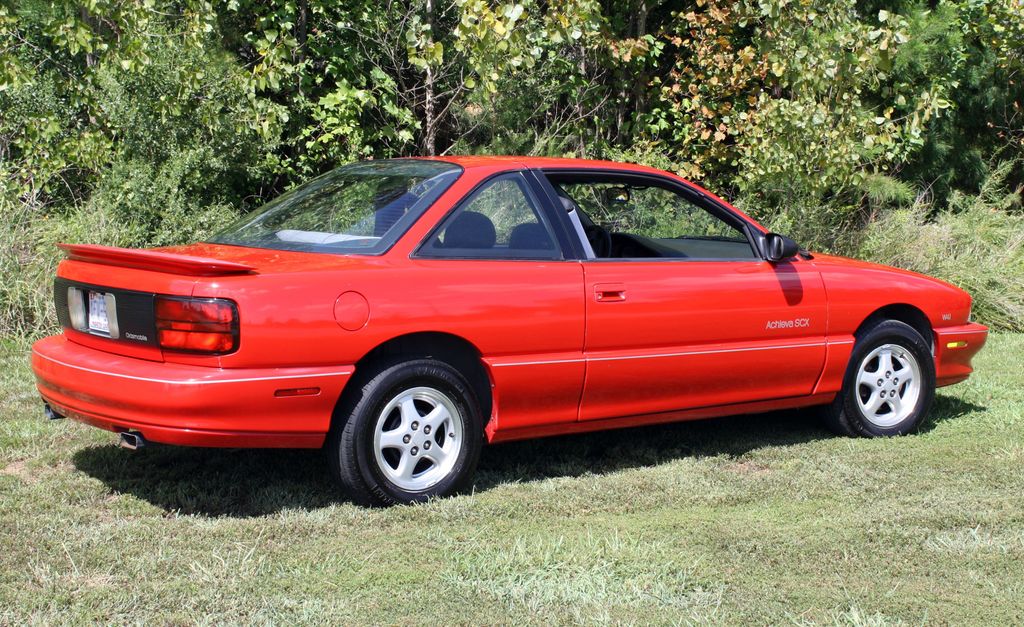
6. **1992–1995 Oldsmobile Achieva SCX W41**Oldsmobile, often overlooked in ’90s performance discussions, presents a compelling testament with the Achieva SCX W41. This front-wheel-drive coupe pursued a different kind of dominance, particularly in SCCA racing. Its existence was driven by homologation requirements, meaning it was built in limited numbers to qualify Oldsmobile for various racing series, making it an exceptionally rare sight then and now.
At its heart was the legendary 2.3L Quad 4 engine, a dual overhead cam (DOHC) four-cylinder marvel. In W41 tune, it delivered an impressive 190 horsepower—remarkable output for a naturally aspirated four-cylinder in the early to mid-90s, showcasing GM’s advanced engineering. Beyond the potent engine, the SCX W41 received specialized chassis tweaks: aggressive suspension calibration, uprated brakes, and unique gearing. These modifications transformed the humble Achieva into a surprisingly capable and engaging track machine.
The Achieva SCX W41’s significance lies in its pioneering role, pushing the boundaries of what a four-cylinder, front-wheel-drive American car could achieve. It demonstrated GM’s willingness to experiment with diverse performance philosophies, moving beyond traditional V8 power. Today, this often-overlooked model is highly coveted by discerning collectors who appreciate its unique place in automotive history. Its scarcity and compelling narrative as a homologation special underline the ’90s push to refine small-displacement, high-output engines.
Car Model Information: 2024 RAM 1500 Laramie
Name: Oldsmobile Achieva
Manufacturer: Oldsmobile
Production: 1991–1997
ModelYears: 1992–1998
Class: Compact car
Layout: Front-engine, front-wheel-drive layout
Platform: GM N platform
BodyStyle: coupe
Predecessor: Oldsmobile Cutlass Calais
Successor: Oldsmobile Alero
Engine: ubl
Assembly: Lansing, Michigan
Transmission: Turbo-Hydramatic 125,automatic transmission
Related: Buick Skylark,Pontiac Grand Am,Chevrolet Corsica,Chevrolet Beretta
Wheelbase: 103.4 in
Abbr: on
Length: 187.9 in
Width: 67.5 in
Height: 53.2 in
Designer: Gary Smith
Categories: All articles needing additional references, All articles with unsourced statements, Articles needing additional references from December 2024, Articles with short description, Articles with unsourced statements from January 2025
Summary: The Oldsmobile Achieva is a front-wheel drive compact sedan and coupe that was introduced by Oldsmobile for the 1992 model year. The Achieva was based on the GM N-body platform, which it also shared with its siblings the Pontiac Grand Am and Buick Skylark. The Achieva replaced the GM N-body Cutlass Calais after its final 1991 model year, and ended production after the 1998 model year.
Get more information about: Oldsmobile Achieva
Buying a high-performing used car >>>
Brand: Oldsmobile Model: Achieva SCX W41
Price: $37,798 Mileage: 34,409 mi.
Read more about: Back to the Roaring Nineties: 10 Legendary American Muscle Machines That Honored Their Heritage
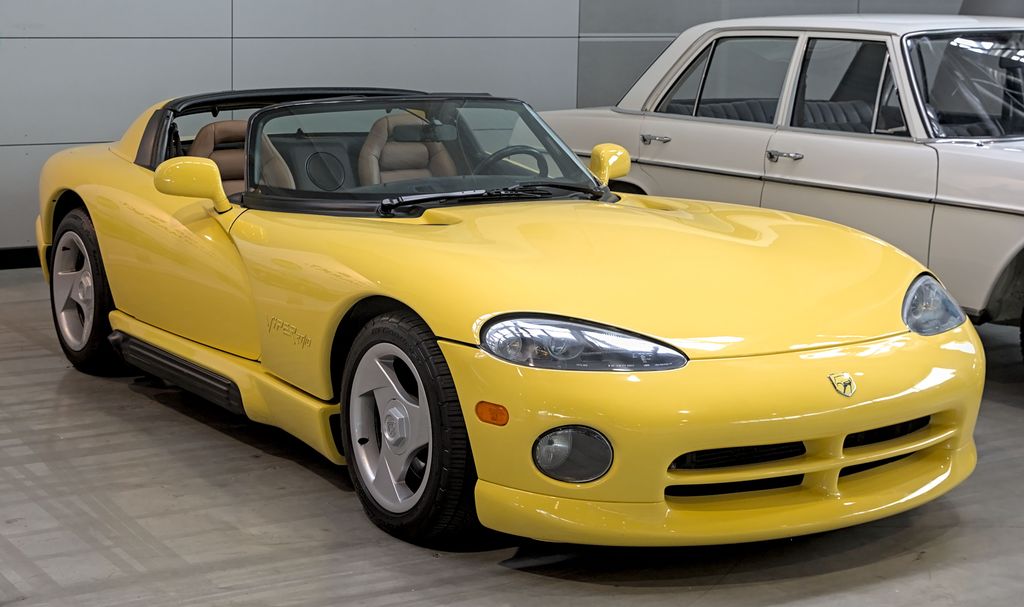
7. **1993 Dodge Viper RT/10 (Gen 1)**When Chrysler unleashed the Dodge Viper RT/10, it was a raw, unapologetic declaration of American muscle, a spiritual successor to the Shelby Cobra. Stripped down to its primal essence, the Viper eschewed modern creature comforts and driver aids, presenting itself as a bare-bones supercar. Its open-top roadster design, coupled with a colossal V10 engine, immediately set it apart, making it an instant icon of unbridled, visceral performance.
Dominating the Viper’s long hood was an enormous 8.0L V10 engine, originally conceived for a truck but refined to deliver a staggering 400 horsepower and 465 lb-ft of torque. This immense power was channeled through a robust six-speed manual transmission, offering a direct connection purists craved. The Viper’s construction featured a lightweight tube-frame chassis, clothed in sleek composite body panels, and aggressive side-exit exhausts. Early models famously lacked a proper roof, exterior door handles, and even anti-lock brakes, emphasizing its uncompromised focus.
Performance figures were savage; the Gen 1 Viper could launch from 0 to 60 mph in approximately 4 seconds, firmly placing it in exotic supercar territory. Chrysler initially produced just over 200 units for its 1992 debut, ensuring exclusivity. As a halo car, the Viper RT/10 defiantly pushed back against the era’s creeping automotive sophistication, embracing unbridled muscle. These early builds have soared in collector value, revered as raw, unapologetic performance icons.
Car Model Information: 2024 RAM 1500 Laramie
Name: Dodge Viper (SR I)
Production: 1991–1995
ModelYears: 1992–1995
Assembly: New Mack Assembly,Detroit,Michigan
Designer: Tom Gale (designer)
Class: Sports car
BodyStyle: Targa top
Engine: Viper engine#First generation,V10 engine
Powerout: 400 hp
Abbr: on
Transmission: BorgWarner,Borg-Warner_T-56_transmission,manual transmission
Wheelbase: 2446 mm
Length: 4450 mm
Width: 1920 mm
Height: 1120 mm
Weight: 1490 kg
Successor: Dodge Viper (SR II)
Layout: FR layout
Related: Rinspeed Veleno
Aka: Chrysler Viper (Europe)
Categories: Articles with short description, Cars discontinued in 1995, Cars introduced in 1992, Dodge vehicles, Short description matches Wikidata
Summary: The Dodge Viper (SR I) is the first-generation Viper sports car, manufactured by American automobile manufacturer Dodge. It was originally tested in January 1989 as a prototype, then later introduced in 1991 as a pace car for the Indianapolis 500, then finally going on sale in January 1992.
The SR I began the Dodge Viper model lineup, which would continue on until 2017, consisting of five generations.
The SRI was replaced by the updated SRII after a series of updates in 1995.
Get more information about: Dodge Viper (SR I)
Buying a high-performing used car >>>
Brand: Dodge Model: Viper RT/10
Price: $37,798 Mileage: 34,409 mi.
Read more about: Back to the Roaring Nineties: 10 Legendary American Muscle Machines That Honored Their Heritage

8. **1994–1996 Chevrolet Impala SS**In the mid-1990s, Chevrolet brilliantly revived the Impala SS nameplate, creating a stealthy, full-size performance sedan. GM ingeniously took the Caprice platform, already known for durability, and injected it with raw power and aggressive styling. The result was a sleeper sedan that captured buyers yearning for classic American V8 performance in a modern, four-door package, seamlessly marrying practicality with street presence.
Underneath its subtly muscular exterior, the Impala SS was powered by a potent 5.7L LT1 V8 engine, derived from the Corvette, producing a healthy 260 horsepower and ample torque. This engine, combined with a smooth-shifting four-speed automatic, provided effortless acceleration and highway cruising. To handle this power, the Impala SS benefited from heavy-duty suspension tuning, much borrowed from police-package Caprices, plus enhanced braking. Built for only three model years (1994-1996), it was predominantly offered in black, dark gray green, or dark cherry metallic.
Performance was surprising for such a large vehicle, achieving low 15-second quarter-mile times. Many enthusiasts hail the 1990s Impala SS as the last great body-on-frame, rear-wheel-drive American sedan, representing a glorious culmination. Its discontinuation marked the end of an era, creating immediate nostalgia and collectibility. Well-preserved examples attract an enthusiastic cult following, commanding significant prices from collectors recognizing its unique blend of power, practicality, and historical significance.
Car Model Information: 2024 RAM 1500 Laramie
Name: Chevrolet Impala
Caption: Fourth generation model (1967)
Manufacturer: Chevrolet
Production: 1957–1985,1994–1996,1999–2020
ModelYears: 1958–1985,1994–1996,2000–2020
Predecessor: Chevrolet Bel Air,Chevrolet Lumina#Second generation (1995–2001)
Successor: Chevrolet SS,Chevrolet Caprice
Platform: GM B platform,GM W platform,GM W platform (GMX211) (2005–2013),GM Epsilon platform#Epsilon II
Class: Full-size car,Mid-size car
Layout: Front-engine, rear-wheel-drive layout,Front-engine, front-wheel-drive layout
Categories: 1960s cars, 1970s cars, 1980s cars, 1990s cars, 2000s cars
Summary: The Chevrolet Impala () is a full-size car that was built by Chevrolet for model years 1958 to 1985, 1994 to 1996, and 2000 to 2020. The Impala was Chevrolet’s popular flagship passenger car and was among the better-selling American-made automobiles in the United States.
For its debut in 1958, the Impala was distinguished from other models by its symmetrical triple taillights. The Chevrolet Caprice was introduced as a top-line Impala Sport Sedan for model year 1965, later becoming a separate series positioned above the Impala in 1966, which, in turn, remained above the Chevrolet Bel Air and the Chevrolet Biscayne. The Impala continued as Chevrolet’s most popular full-sized model through the mid-1980s. Between 1994 and 1996, the Impala was revised as a 5.7-liter V8–powered version of the Chevrolet Caprice Classic sedan.
In 2000, the Impala was reintroduced again as a mainstream front-wheel drive car. In February 2014, the 2014 Impala ranked No. 1 among Affordable Large Cars in U.S. News & World Report’s rankings. When the 10th generation of the Impala was introduced for the 2014 model year, the 9th generation was rebadged as the Impala Limited and sold only to fleet customers through 2016. During that time, both versions were sold in the United States and Canada. The 10th-generation Impala was also sold in the Middle East and South Korea.
Get more information about: Chevrolet Impala
Buying a high-performing used car >>>
Brand: Chevrolet Model: Impala SS
Price: $37,798 Mileage: 34,409 mi.
Read more about: The 10 Unforgettable American Cars That Defined the Roaring ’90s Automotive Scene
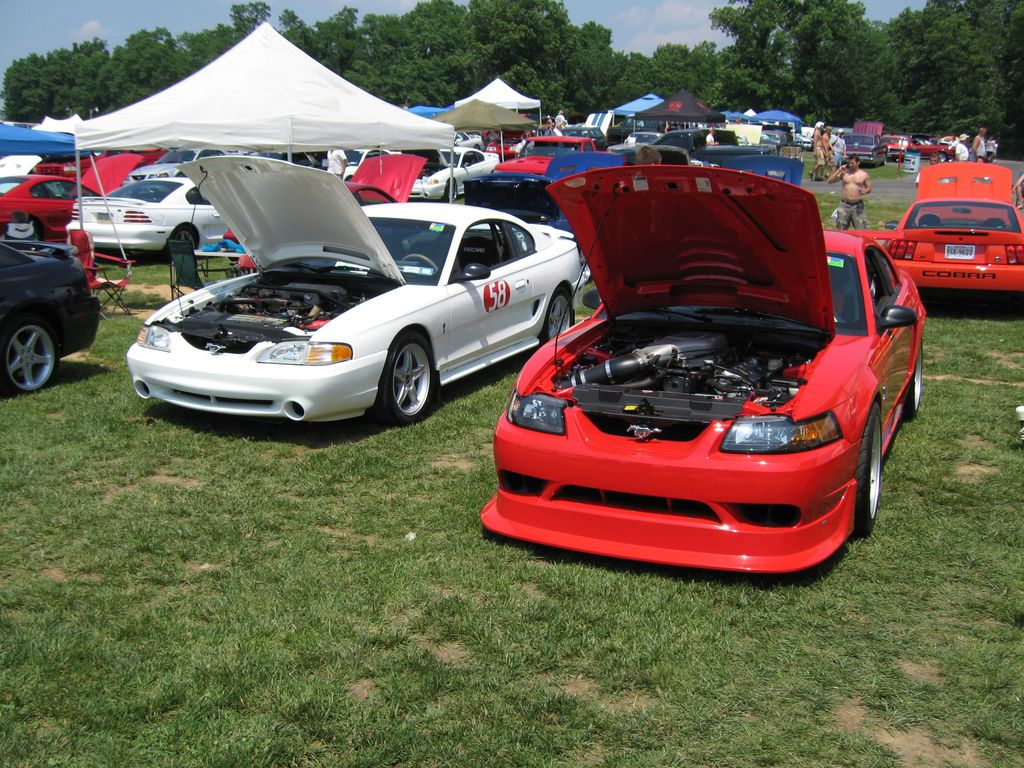
9. **1995 Ford Mustang SVT Cobra R**Building upon the celebrated Fox-body SVT Cobras, Ford’s Special Vehicle Team raised the bar again with the 1995 Mustang SVT Cobra R. This wasn’t merely a performance variant; it was a purebred racing machine, engineered to dominate on the circuit. Utilizing the new SN-95 generation Mustang platform, the 1995 Cobra R took the stripped-down, race-ready pony car concept to an even greater extreme, boasting increased displacement for a formidable punch.
At its heart was a specially prepared 5.8L Windsor V8, a significant upgrade from the standard Cobra’s 5.0L. This larger engine delivered a robust 300 horsepower, providing a substantial bump in torque and grunt. In its relentless pursuit of weight reduction and track superiority, Ford eliminated non-essentials: no back seat, radio, air conditioning, or even basic sound deadening. Production was meticulously limited to just 250 units, each finished in distinctive Crystal White paint with a saddle interior, ensuring exclusivity.
The 1995 Cobra R’s performance was astounding for a production Mustang, capable of high 13-second quarter-mile times. This rare and potent machine signaled Ford’s unwavering dedication to track-worthy Mustangs, laying a defining blueprint for future limited-run, high-performance models like the 2000 Cobra R and modern Shelby GT350R. These highly coveted examples are intensely sought after by collectors who deeply appreciate their rarity, uncompromising construction, and impact on the Mustang lineage.
Car Model Information: 2024 RAM 1500 Laramie
Caption: 2004 Ford Mustang SVT Cobra
Name: Ford SVT Mustang Cobra
Manufacturer: Special Vehicle Team
Production: 1993–2004 (79,958 produced)
Class: Pony car
BodyStyle: 1993:,hatchback,coupe,convertible
Successor: Shelby Mustang#2007.E2.80.932009 Ford Shelby GT500
Platform: Ford Fox platform
Layout: Front-engine, rear-wheel drive layout
Categories: 2000s cars, All articles with specifically marked weasel-worded phrases, Articles with short description, Articles with specifically marked weasel-worded phrases from July 2025, Cars introduced in 1993
Summary: The Ford SVT Mustang Cobra (also known as “SVT Mustang Cobra, SVT Cobra,” or simply as “Cobra”) is a pony car that was built by American automobile manufacturer Ford Motor Company’s Special Vehicle Team division (or SVT) for the 1993 to 2004 model years.
The SVT Cobra was a high-performance version of the Ford Mustang and was considered the top-of-the-line variant, being positioned above the Mustang GT and Mach 1 models during its production run. On three occasions, the race-ready, street-legal SVT Cobra R variant was produced in limited numbers.
The SVT Cobra was succeeded by the Mustang Shelby GT500 which was introduced for the 2007 model year.
Get more information about: Ford Mustang SVT Cobra
Buying a high-performing used car >>>
Brand: Ford Model: Mustang SVT Cobra R
Price: $37,798 Mileage: 34,409 mi.
Read more about: Back to the Roaring Nineties: 10 Legendary American Muscle Machines That Honored Their Heritage
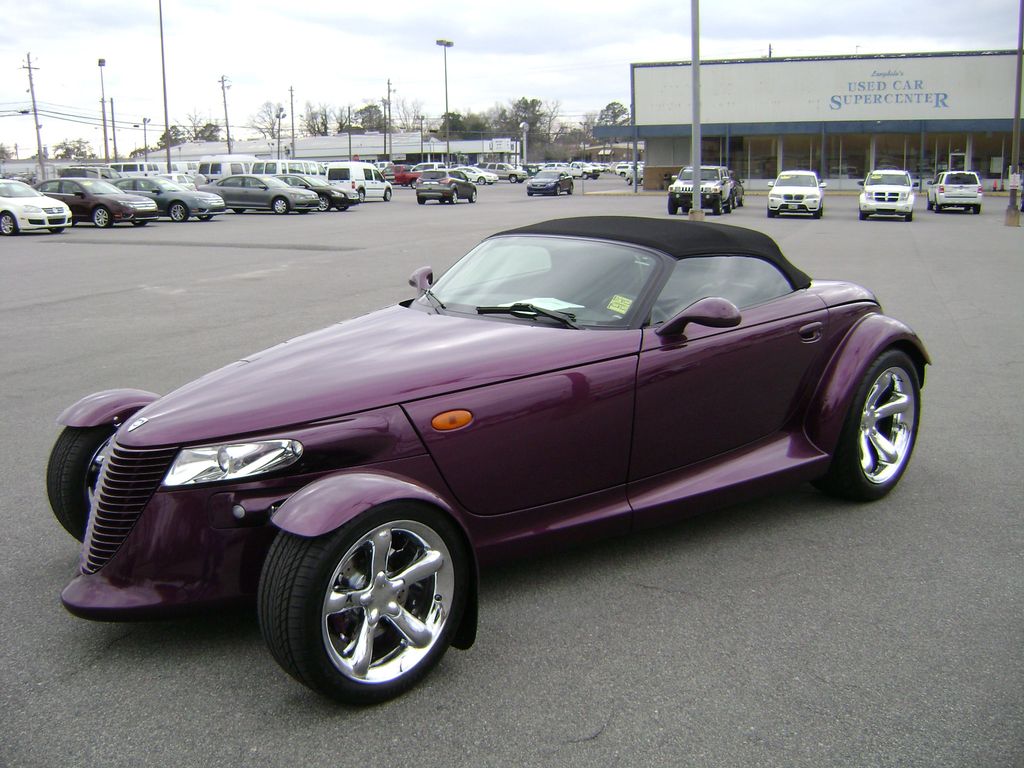
10. **1997 Plymouth Prowler**In an era dominated by practical vehicles, Plymouth defied convention with the audacious 1997 Prowler. This unique roadster looked like a rolling concept, a radical homage to classic American hot-rod design cues with exposed front wheels, a low-slung body, and distinctive open-wheel architecture. It was a bold, whimsical statement from Chrysler, showcasing a playful side of automotive design contrasting utilitarian trends.
While its appearance screamed V8, the initial Prowler was powered by a technologically advanced 3.5L SOHC V6 engine, producing 214 horsepower, later upgraded to 253. This engine paired exclusively with a four-speed AutoStick automatic transmission. The Prowler’s lightweight aluminum chassis and unique suspension design, reminiscent of classic hot rods, contributed to its distinctive ride and handling. Its performance prioritized effortless cruising and visual statement over drag-strip dominance, defining a new “retro-rod” niche.
The Prowler’s significance lies not in blistering speed, but in its audacious design and role as a rolling work of art blending retro aesthetics with modern manufacturing. It was a vehicle designed to evoke emotion and turn heads, proving mainstream automakers could still produce unconventional machines. While not a traditional “muscle car,” its unique place in history as a bold, limited-production experiment ensures increasing appreciation among collectors. It appeals to those seeking originality, artistic flair, and a distinct piece of ’90s automotive eccentricity.
Car Model Information: 1997 Plymouth Prowler
Name: Plymouth Prowler
Manufacturer: Chrysler Corporation
Production: 1997–2002,11,702 produced
Assembly: Detroit, Michigan
Class: Sports car
Layout: Front-engine, rear-wheel-drive layout#Front mid-engine, rear-wheel-drive layout
Platform: Chrysler PR platform
BodyStyle: Roadster (automobile)
Engine: Chrysler SOHC V6 engine#3.5,V6 engine
Transmission: Ultradrive#A606/42LE,automatic transmission
Aka: Chrysler Prowler (2000–2002)
Wheelbase: 113.3 in
Abbr: on
Length: 165.3 in
Width: 76.5 in
Height: 50.9 in
Weight: 2800 lb
Successor: Chrysler Crossfire
Designer: Tom Gale (designer)
Caption: 2000 Plymouth Prowler
Categories: 2000s cars, All articles needing additional references, Articles needing additional references from November 2015, Articles with short description, Cars introduced in 1997
Summary: The Plymouth Prowler, later the Chrysler Prowler, is a two-door, two passenger sports car, manufactured and marketed by DaimlerChrysler for model years 1997-2002 — widely known for its hand-crafted aluminum bodywork and its retro-hot rod styling with open, Indy racer-style front wheels.
Based on the 1993 concept car of the same name, Chrysler offered the Prowler over a single generation, with a V6 front-engine, and a rear-transaxle, rear-drive configuration — reaching a total production of 11,702 units.
Get more information about: Plymouth Prowler
Buying a high-performing used car >>>
Brand: Plymouth Model: Prowler
Price: $34,993 Mileage: 9,424 mi.
Read more about: 16 Legendary Car Flops: The Vehicles Nobody Wanted
From the overlooked Achieva SCX W41 to the unbridled ferocity of the Gen 1 Viper, the stealthy street-cred of the Impala SS, the pure track focus of the Cobra R, and the avant-garde Prowler, these vehicles paint a vivid picture of the 1990s. This decade redefined American performance, blending raw power with emerging technology, niche applications, and audacious design. Each car, a testament to engineering ingenuity and savvy investment, reminds us that automotive excellence takes many forms. The ’90s delivered a treasure trove now worth far more than initially conceived.

